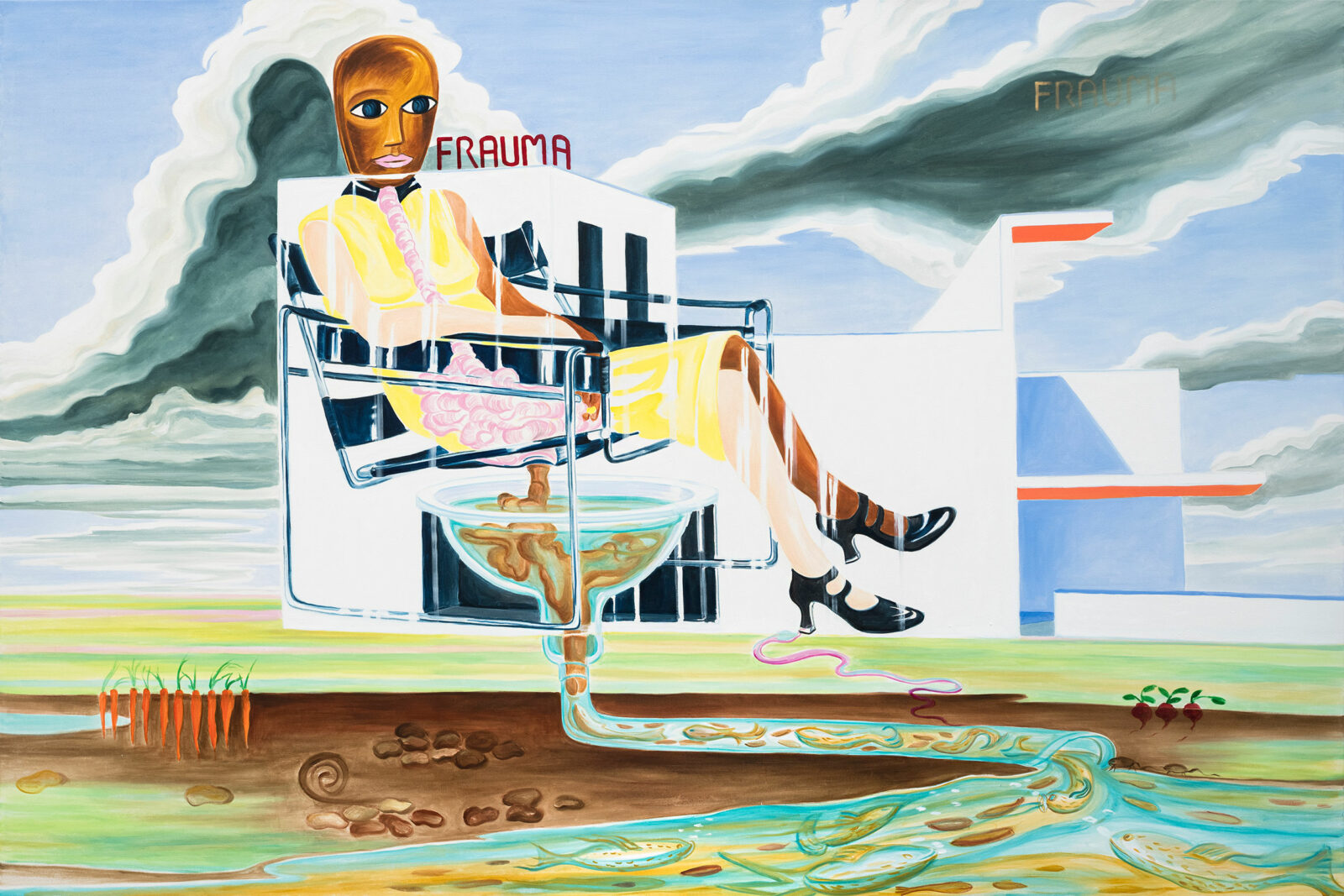Anna Meyer
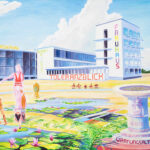
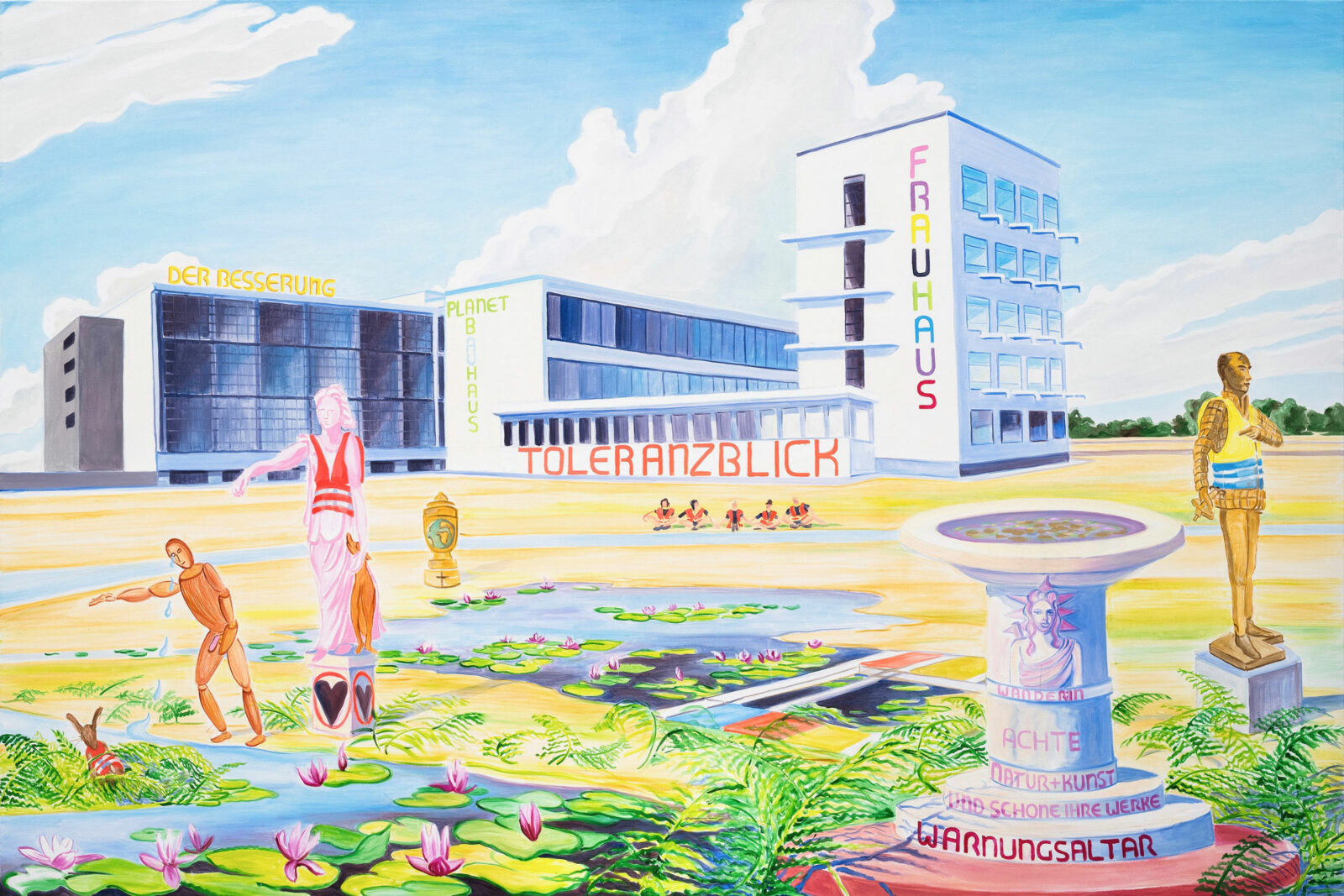
Anna Meyer.
Planet B House
Planet B House
22 Mar – 8 Dec 2024
Mon – Sun, 10 am – 5 pm (Mar – Oct)
“Snow and ice are melting, the landscape is drying out, silting up. All the ambitious sentences that could save us are also silting up because we didn't want to after all. Creepy shivers of fear chase across our skin as we look at what is considered our sad, toxic work on the earth. Lucidly painted climate crisis landscapes in colours that burn under the eyelids cannot solve man-made problems, but they at least inspire a kind of survival work on the planet.”
Anna Meyer, residency artist 2023, is showing new paintings and models in the former weaving mill under the title “Planet B Haus”. The dividing lines between nature and culture, environment and in-world are slipping, spatial and temporal boundaries are dissolving. They are replaced by floating, fluid identities and hybridisations of animals, humans, technoid beings, the animate and inanimate. Meyer combines feminist and ecological aspects in her work. In doing so, she visualises political, social, economic and cultural asymmetries and entanglements in equal measure. Bauhaus modernism and the Enlightenment, Dessau and the Gartenreich Dessau-Wörlitz merge into the present day, a visual axis through the ages.
Interview
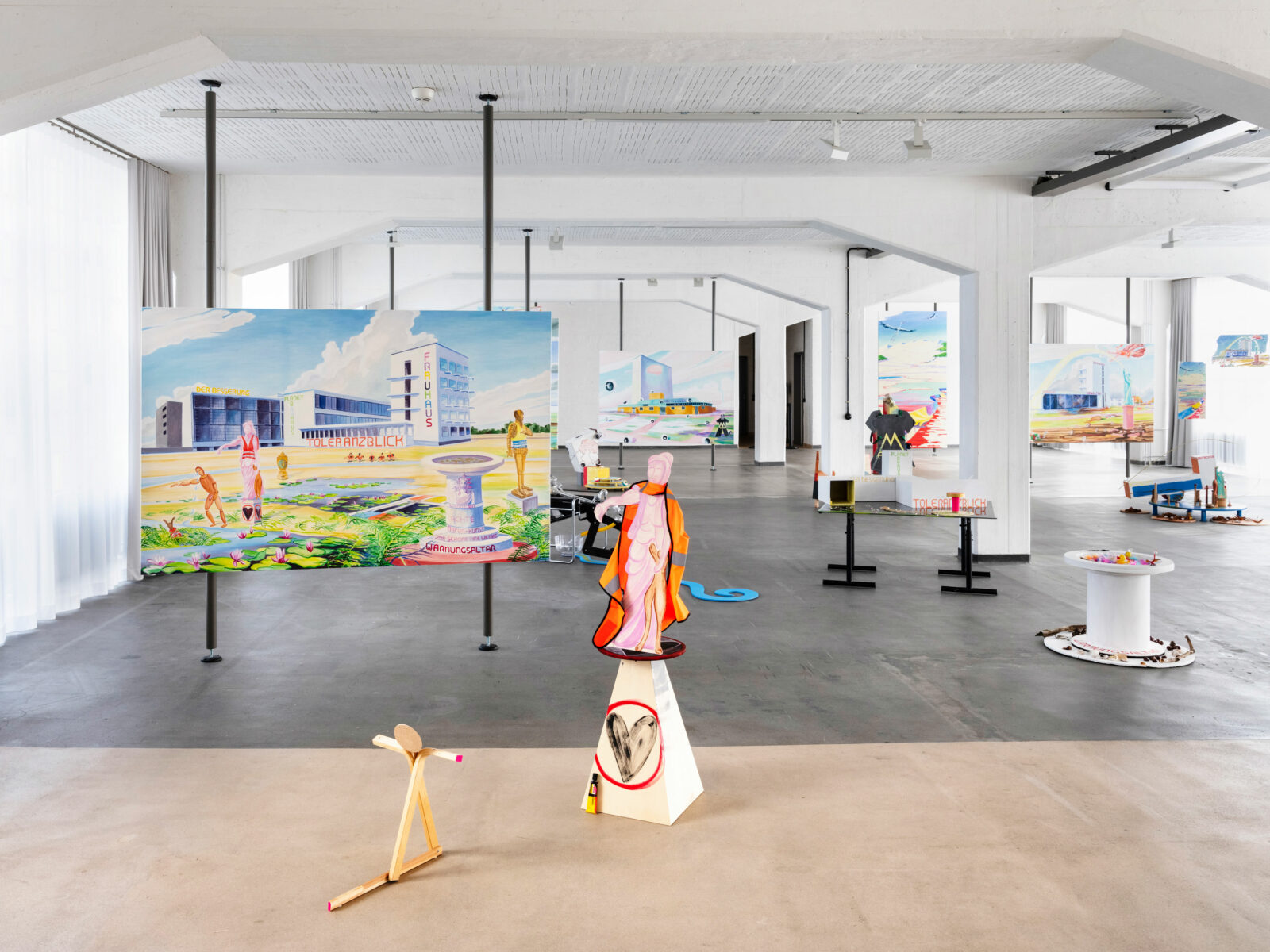
© Bauhaus Dessau Foundation / Photo: Meyer, Thomas, 2024
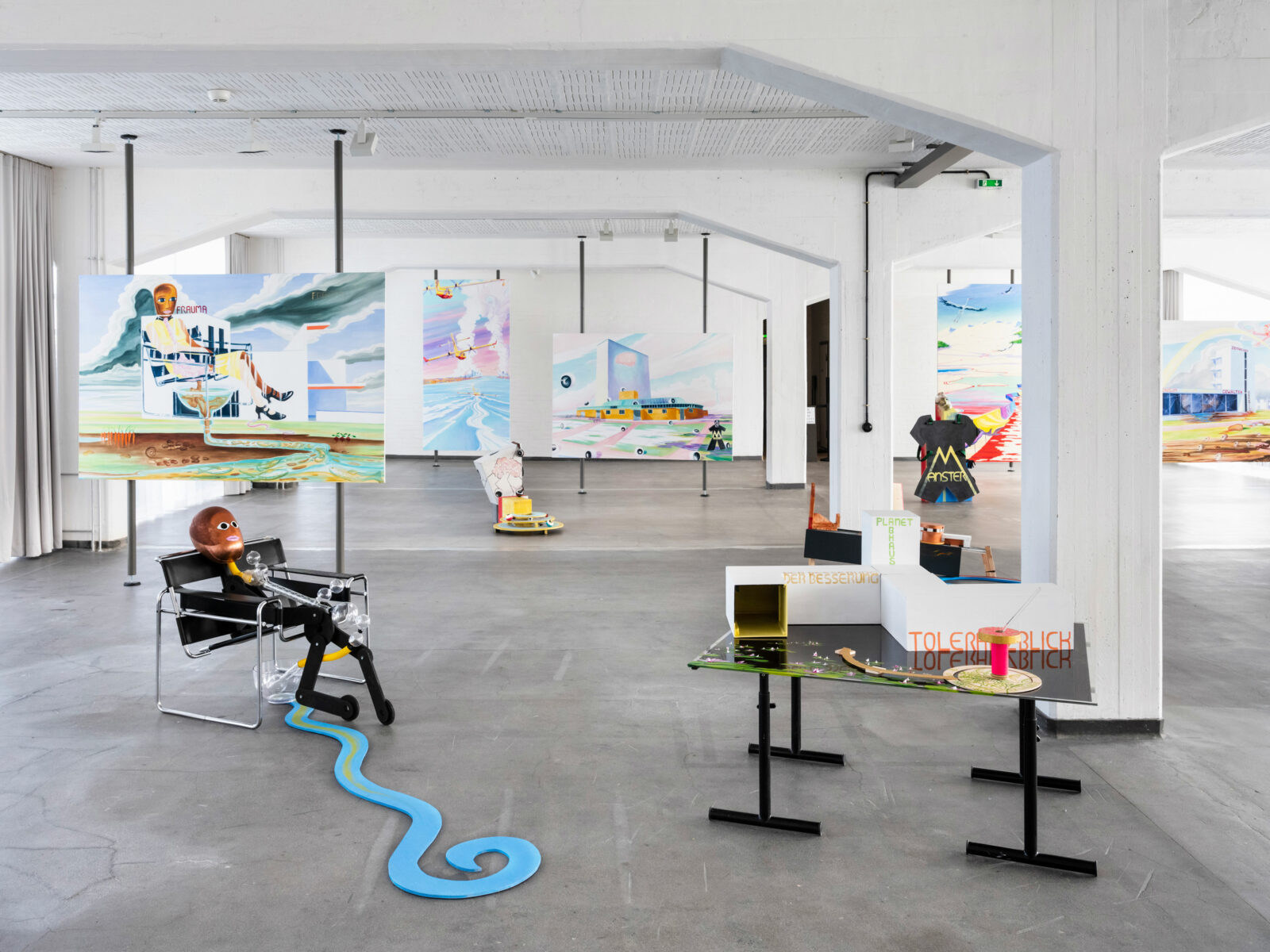
© Bauhaus Dessau Foundation / Photo: Meyer, Thomas, 2024

© Bauhaus Dessau Foundation / Photo: Meyer, Thomas, 2024

© VG Bild-Kunst, Bonn 2024 / photo: Rudolf Strobl / Courtesy Galerie Krobath and artist

© VG Bild-Kunst, Bonn 2024 / photo: Rudolf Strobl / Courtesy Galerie Krobath and artist
Anna Meyer in conversation with Barbara Steiner
Frauhaus (Womanhouse) speaking
Barbara Steiner: You were an artist in residence at the Muche House in 2023. During this time, you explored the Dessau-Wörlitz Garden Realm, immersed yourself in the history of the Bauhaus and made some initial sketches. What captured your interest, which aspects interested you the most?
Anna Meyer: I was interested in the Wörlitz Garden Realm and its connections with the Enlightenment. It reflects a holistic way of thinking that was evidently also a source of inspiration for the Bauhäuslers. This has again become highly relevant for our time and the challenges it brings us. I began to interconnect the feminist reappraisal of the Bauhaus, questions surrounding the climate crisis and holistic ecological thinking with the Enlightenment, placing them within the context of our time. The complex range of themes merge perfectly with one another through painting. At the interface between “irreal” moments and hard reality, the pictures become the scene of a dilemma, a search for solutions.
*
BS: Can you give us an example of how you make connections between the various levels and motifs?
AM: The first conservation monument, the “Warning Altar”, is located in the Wörlitz Garden Realm. This monument immediately entered my visual world, along with the quotes “Toleranzblick” (Tolerance View) and “Der Besserung” (To Improvement). These are all words that could guide us through the “age of populism”, as I like to call it. In my paintings, it is logical that Diana, the goddess of the hunt, wears a high visibility vest like the ones worn by the Last Generation, and points the “wooden dummy” in the right direction. The climate gluers are resting on the grass after completing some tough business, or have they already glued themselves to the lawn? The bronze statue of Gorbatschow – in a yellow and blue safety vest – turns away, shocked at the war in Ukraine. He never imagined the post-Soviet era to turn out like this: “Frauhaus, take over!”
The timeline revolves through history, arriving in the global present. “Capital” degenerates into capitalism, “Konsum”1 into the consumer world, “The Powers” (of state) are under pressure, action and reaction result in terrorism, war, horror. The models and paintings automatically merge along timelines of this nature. I had already collected impressions, observations and the concept in my sketchbook and put them together in small visuals. Later, in the studio, the pictures almost painted themselves.
*
BS: You built the models in the model workshop at the Bauhaus Dessau Foundation. You found some of the materials when you were out walking. Others were made from our leftover materials, which you adapted or processed. You worked with found objects in some of your earlier models, often using materials that other people would throw away. What interests you about this kind of material?
AM: Art always consists of recycling ideas, digesting the world, so it appears logical to me to appropriate existing materials and reprocess leftovers. When the oil paints literally “fall on”, I feel that sustainability is being refined in some way. You could also say: trash gives a brief nod in the direction of humour. The roguishly humorous installation space is a witty extension of the image.
*
BS: There are constant references to the Bauhaus. This is where you begin with feminist criticism. What were the considerations that led you here?
AM: It was hard for Frauhaus back then, just as it is now. A woman was called for, only to find she wasn’t needed. She had to curb her exuberant, intimidating creativity and weave it into textiles. Meanwhile her male counterparts, still traumatised from the dark horrors of the First World War in the not-so-distant past, fascinated the world with their stunningly impressive ideas. They even gave birth to modernity, unfortunately at the expense of the women’s ideas, which were every bit as innovative. Together they designed a better, faster, smarter world. But only the group beginning with M was given credit for it.
The house as digestion, as architecture, as the digestion of ideas. But also, the house as trauma, the oppression of the house-wife, the female artist – that is what interests me. This is how FRAUMA came into being, as a symbol, but also as the result of a generation of women rising up between the wars, suffering from the trauma of the war, doubly weighed down by the fetishes, careers and egotistical control of men. Frauma evidently has digestive problems that flow into the circular economy and thus become fertile again.
*
BS: Let us talk about painting: up to the present day, the prejudice still exists that painting cannot be socially relevant. At the historic Bauhaus, it was also true that the painters did not really fit in with the revolutionary school of thought based on social considerations. You certainly ascribe a social role to it. What does it consist of?
AM: Painting can achieve a great deal if it is applied to the present day, which is my objective. In an almost ideal way, it combines harsh reality with an element of discomfort that cannot be clearly defined. With regards to content, it can act by reflecting and negotiating contemporary issues – not by reproducing them 1:1, but by changing them through painting, processing them. I see an interface between the documentation of time and (de)figurative painting which gives the content a new direction, removing it and reintroducing it in a modified way.
Because the indefinable/emotional is condensed through painting, it can acquire a kind of calm relevance. It is a mixture between fact and invention that can find its own coherence.

